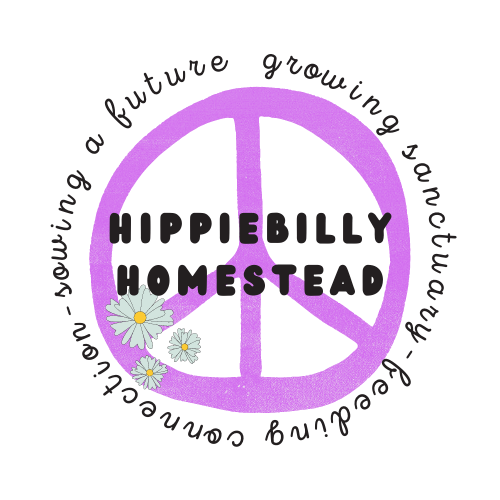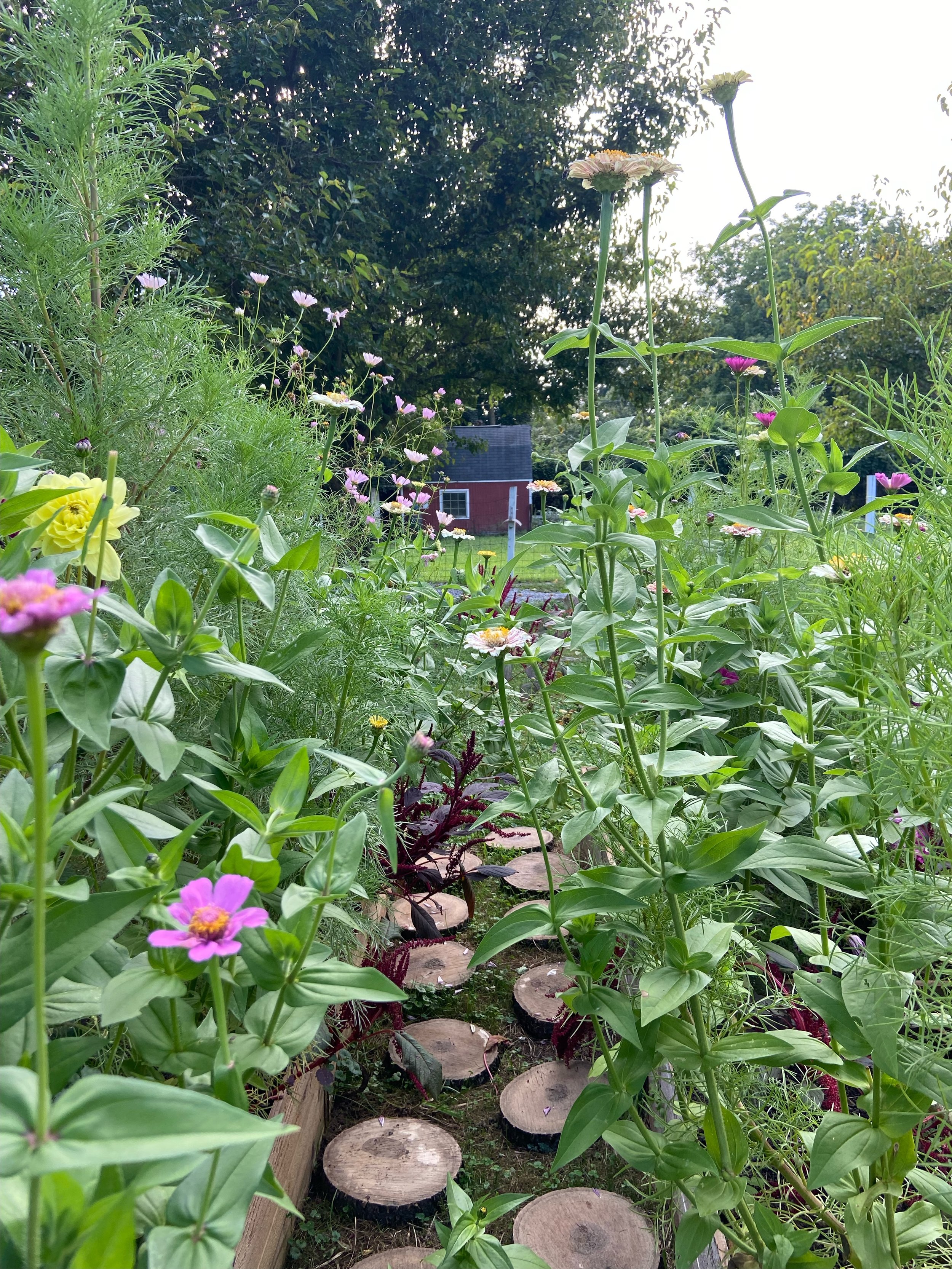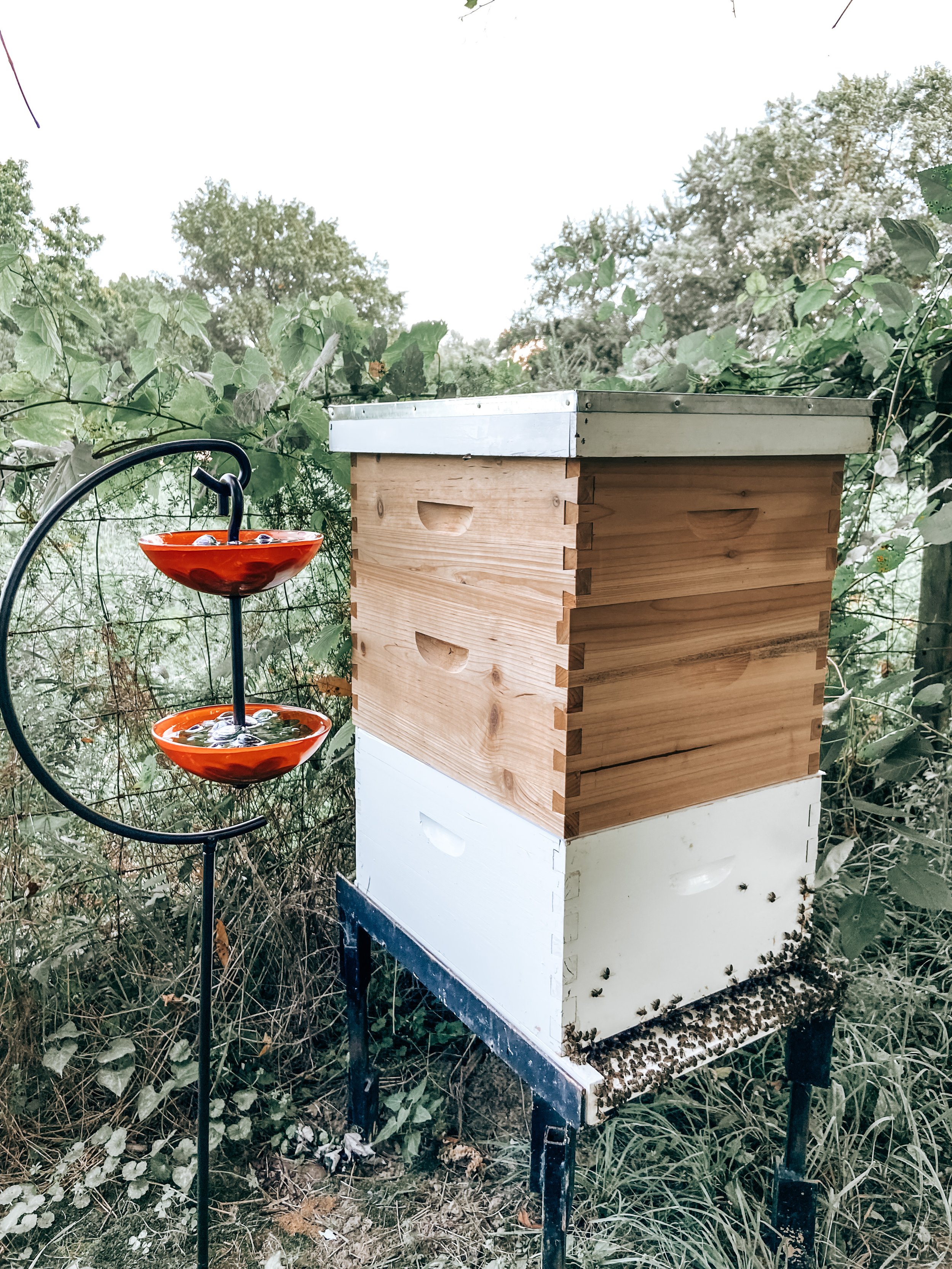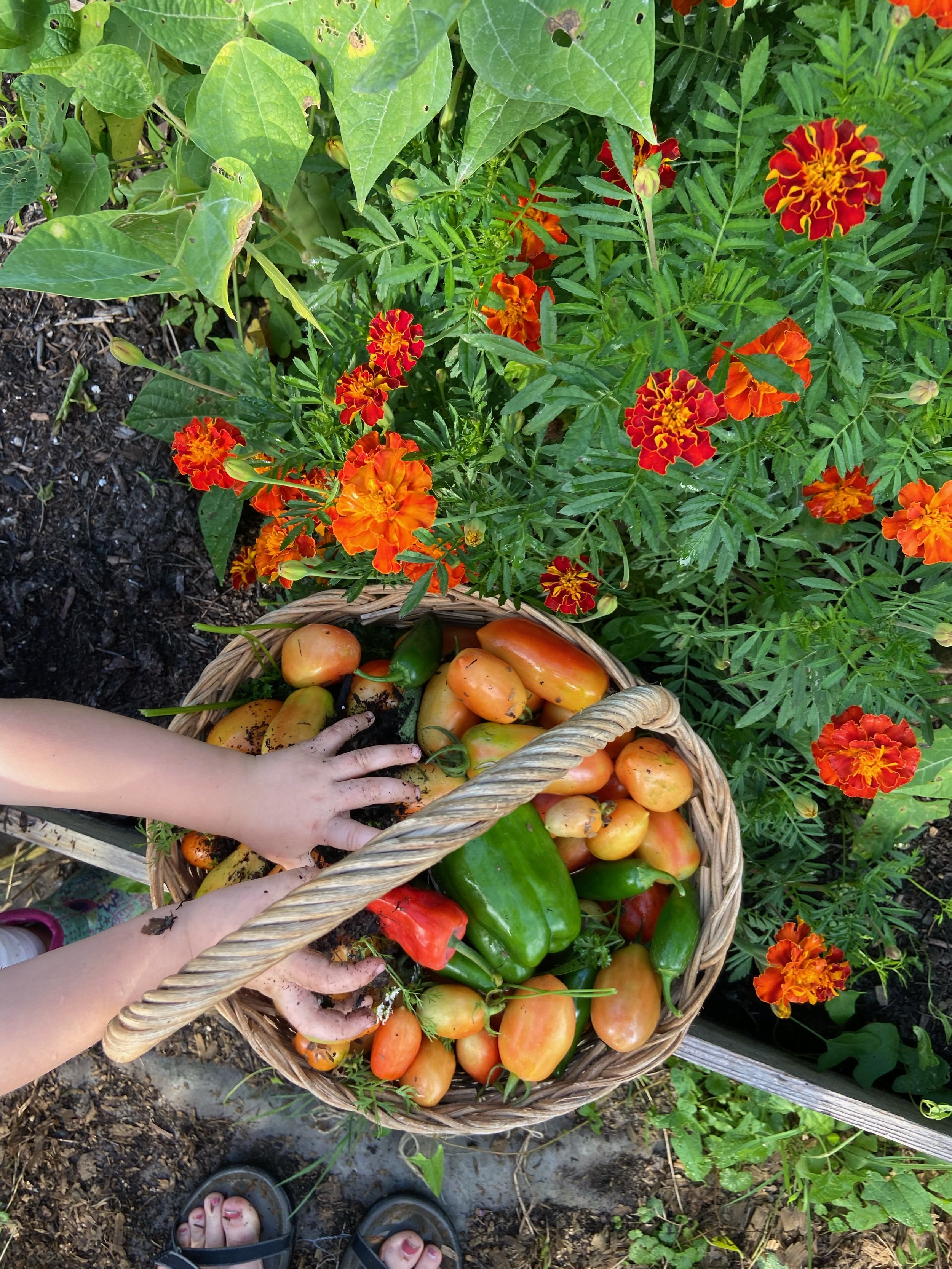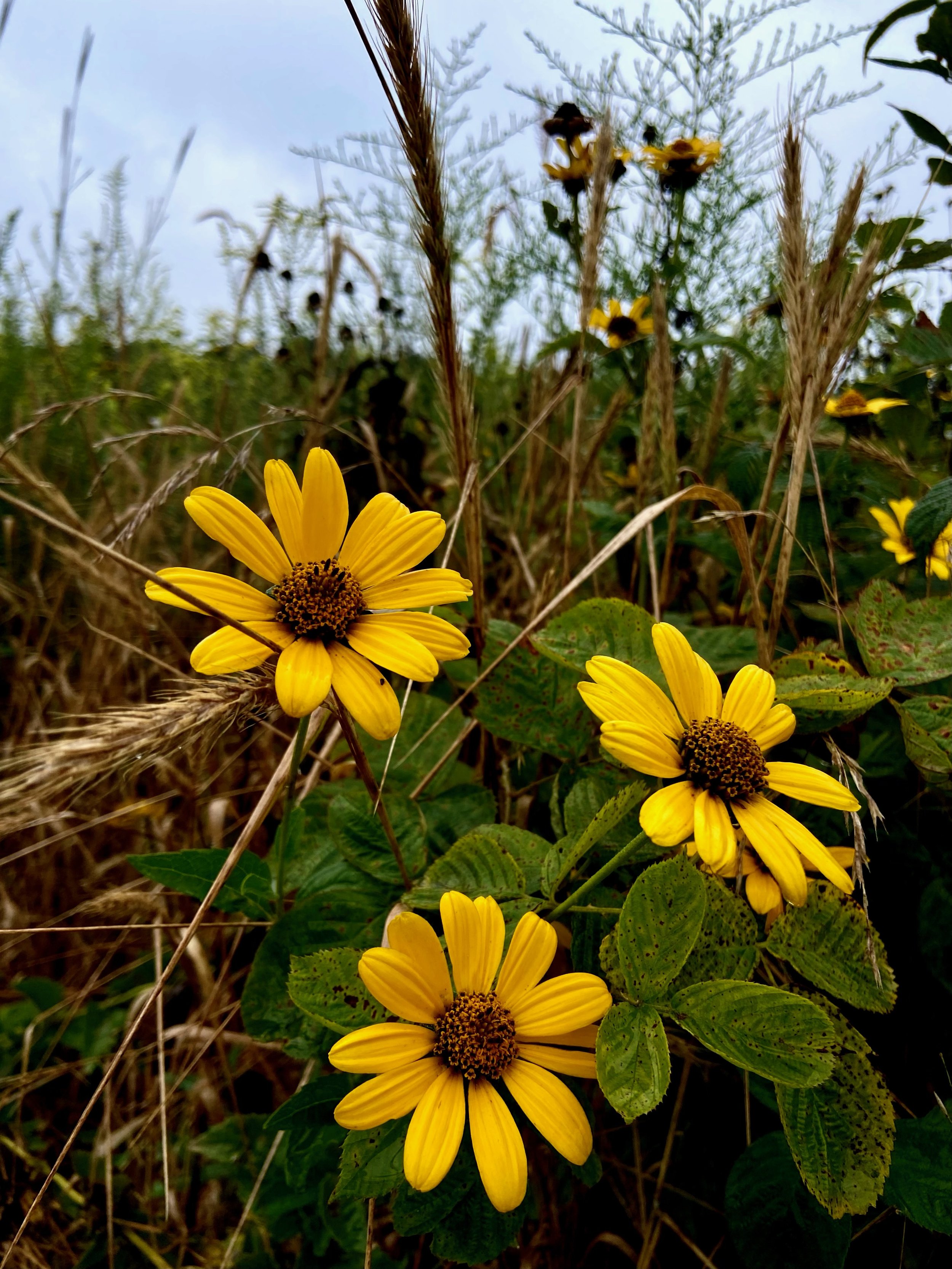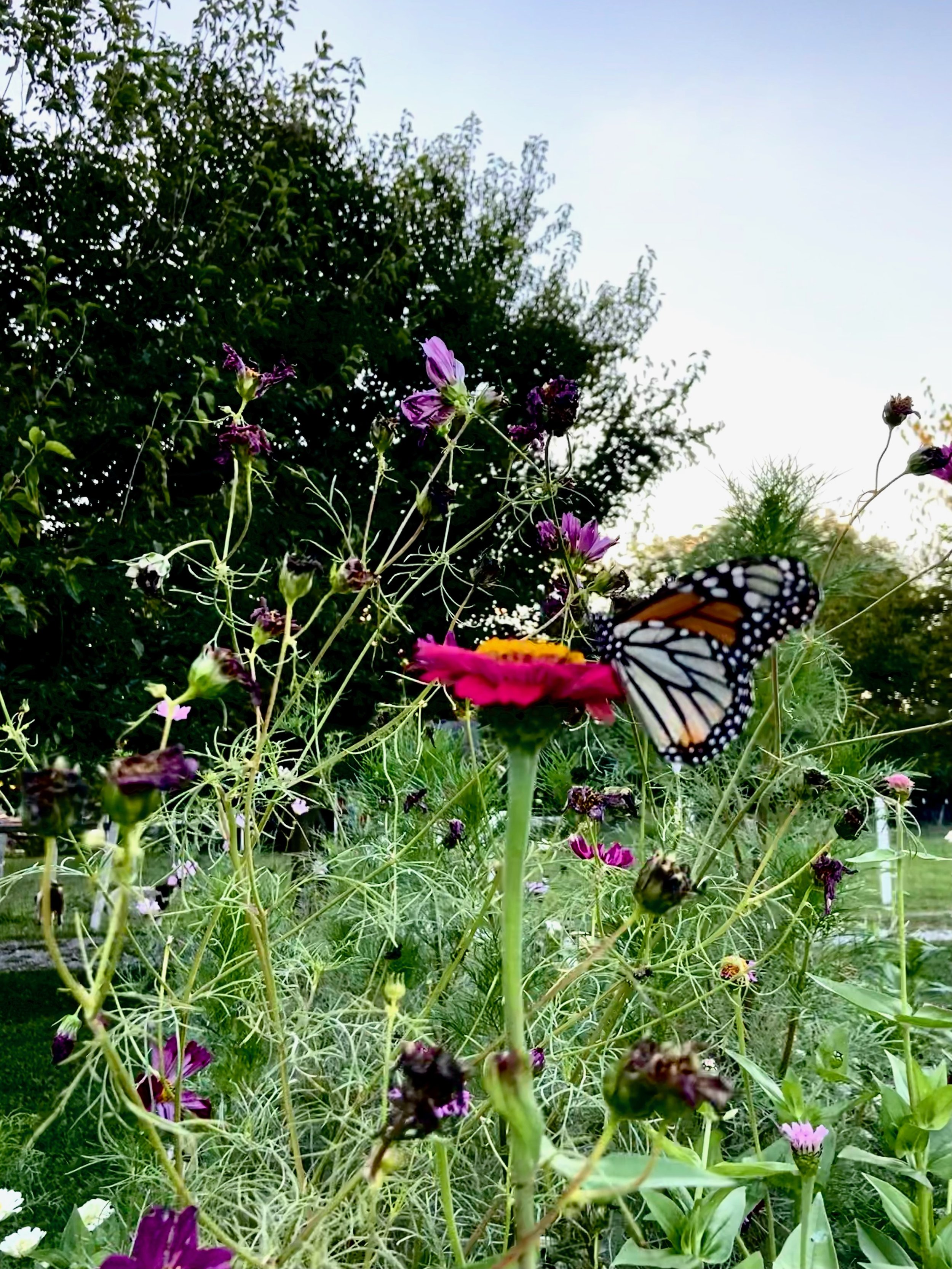Planting for Pollinators
Last year we added bees to our homestead. I don’t talk about them too much, mostly because I’m still very much in the learning phase of beekeeping. We sourced them from a local friend and bee farmer who has also become a mentor to us. His friendship has made the uncharted waters a little more calm for us to navigate. Now we have to hope they make it through winter alive!
I was really on the fence about bringing bees to our homestead. I haven’t had honey in 15 years and felt pretty conflicted about having them. I did some research and really just kept finding reasons to say yes. Saying yes to the bees helped me justify adding four raised beds to our garden JUST for flowers. But this tidbit is what really got me:
Data suggests that 75% of the global food supply depends on pollinators to some extent. About 30% of the global food supply is TOTALLY dependent on the work of pollinators. Pollinators (bees, wasps, beetles, butterflies, some birds, etc.) spread pollen from one plant to another in order for fruiting to occur. Fruit is typically the part of the plant that we eat!
Not all foods require pollination and not all foods rely on pollination to the same degree. Some foods, like vanilla, cocoa beans, kiwi, pumpkins and some melons, are totally dependent on pollination. Other foods, like bananas, wheat, and potatoes don’t rely on it at all.
Gardening is a great way to promote the activity and life cycles of pollinators. You can naturally attract, protect, and promote the activity of pollinators by using these simple tips!
Native Plants
Native plants are adjusted to the environment and conditions of your area. They’re more efficient, using less resources and requiring less maintenance, and more resilient. Growing native plants is great for our environment and helps increase the health, efficiency, and resiliency of our ecosystems.
Check out the National Wildlife Foundation to find native plants around you. You can buy wild seeds for native plants at the Wild Seed Project.
We grow black-eyed susan, bee balm, golden rod, asters, and more in our pasture and our flower beds.
Don’t Harvest Everything
Leave some flowers. Let herbs go to seed. Flowers and seeds will feed bees, butterflies, and birds. These pollinators will spread the seeds and drop them in new locations. Plant varieties of flowers that bloom all season or stagger the flowers you do plant so that pollinators can benefit from season-long blooms.
I am purposely waiting (if I can hold myself back) to start some of my flowers so that I have season-long blooms. We planted a lot of tulips and daffodils in the fall, will have a round of flowers to plant as soon as the fall bulbs are done blooming, and will plant more seeds at this time as well.
Stay Away from Synthetic Chemicals
Synthetic chemicals and fertilizers harm beneficial insects as much as they do garden pests. Use non-chemical or all-natural methods to keep pests out of your garden before resorting to harmful synthetic chemicals.
Companion planting is a great way to benefit soil, introduce fragrant or flower plants to your garden, and increase the health of your main crops. Many common companion plants are great for pollinators and for deterring pests, like lavender!
Add a Pops of Color
Bring flowers into the garden to add pops of color. Pollinators are attracted to bright colors. Planting flowering herbs and flowers near melons, squash, and pumpkins is especially beneficial to your garden since these plants NEED pollination to produce fruit.
Add Shelter
Small things like branches or mulch, insect hotels, or bird baths in or near your garden will keep pollinators safe, healthy, and they’re more likely to return.
References:
https://ourworldindata.org/pollinator-dependence
